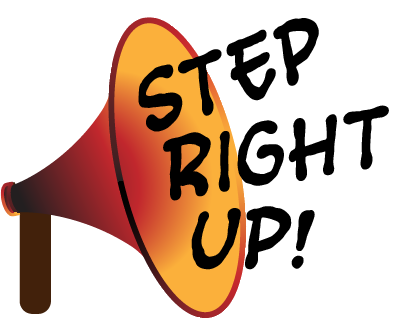| 4:00 am |

The first train arrives and unloads menagerie wagons, the cookhouse wagons, and trucks. Everything is moved to the show lot. The cookhouse tent is raised and the cooks get to work. |
| 7:00 |
Breakfast is served. The horse tent goes up. |
| 7:30 |
The third train arrives. Stakes are driven for the menagerie, big top, sideshows, dressing, and shop tents.
Wagons are rolling onto the lot. |
| 8:30 |

Poles for the big top, menagerie, and other tents are raised. Unloading canvas begins. Crews start "making canvas," lacing canvas pieces together. The fourth train may arrive, but there's no rush as it's mostly staff and performers, "brass and art." |
| 9:15 |

The great tents rise with the help of horses and elephants. Rows of trunks are delivered to the dressing tents.
|
| 10:00 |
Working elephants arrange cages in the mammoth menagerie. Sideshow banners and interior stages go up. Rigging and gear for acts go into the big top. Tents are set up for the doctor, the blacksmith, and shops. |
| 11:30 |

Grandstands and bleachers are erected in the big top, chairs are aligned tier by tier. The flag goes up for lunch.
|
| Noon |

Tickets and concessions are selling. Sideshow talkers are drawing people in. |
| 1:00 pm |
Visitors pour into the menagerie to see Gargantua and the rest of the beasts, then on into the big top. The circus band performs. |
| 2:15 |

The Greatest Show on Earth matinee begins! |
| 3:00 |
Sideshow artists eat so they can be back out when the crowds exit the show. |
| 5:30 |

Dinner is served to everyone else. |
| 6:15 |
The cookhouse is razed and heads back to the train station. Performers and animal acts practice in the big top. |
| 7:00 |
The main entrance opens for the evening show, and the band plays. |
| 8:15 |

The Greatest Show on Earth begins again! Cages and lead stock leave the menagerie tent, which is lowered, packed, and loaded onto wagons. |
| 9:30 |
The menagerie cavalcade leaves for the train station. The sideshow is dismantled. |
| 10:30 |

The first train leaves with cookhouse and dining departments and animals except for elephants. The crowds leave the show lot, wondering what happened to the menagerie. |
| 11:00 |
"The big top is filled with the thunder of a falling world, a world tumbling in regimented rhythm and sequence into rumbling wagons and trucks that roll from under acres of sagging and looping canvas. Small tents fade into the night." |
| Midnight |
"The big top—a great, grey moth, flutters in gigantic, grotesque convulsions to the earth. Men swarm over it unlacing and rolling its flattened sections. Cranes swing the huge bales into wagons. Searchlights sweep the lot." The tents are trucked to the station. |
| 12:30 am |
The big top pole wagon is the last to leave the lot. A crew gathers up flares set out as guides. The second and third trains load. |
| 2:00 |
The first three trains have departed. The fourth train, with its brass and art, will leave at their convenience. |
| 4:00 |
It all happens again in a new town. |





 Home sweet rail car
Home sweet rail car











